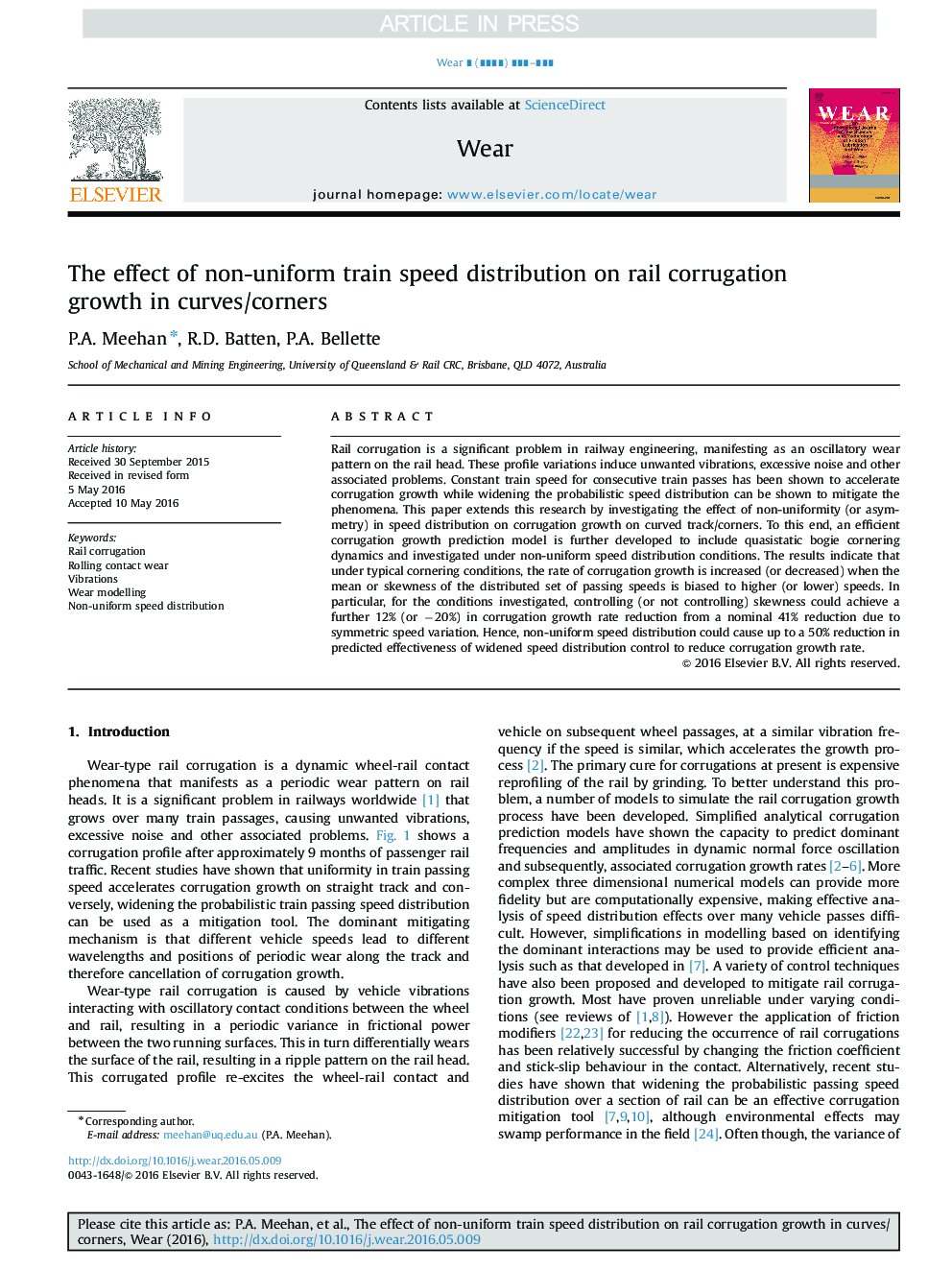| Article ID | Journal | Published Year | Pages | File Type |
|---|---|---|---|---|
| 4986825 | Wear | 2016 | 11 Pages |
Abstract
Rail corrugation is a significant problem in railway engineering, manifesting as an oscillatory wear pattern on the rail head. These profile variations induce unwanted vibrations, excessive noise and other associated problems. Constant train speed for consecutive train passes has been shown to accelerate corrugation growth while widening the probabilistic speed distribution can be shown to mitigate the phenomena. This paper extends this research by investigating the effect of non-uniformity (or asymmetry) in speed distribution on corrugation growth on curved track/corners. To this end, an efficient corrugation growth prediction model is further developed to include quasistatic bogie cornering dynamics and investigated under non-uniform speed distribution conditions. The results indicate that under typical cornering conditions, the rate of corrugation growth is increased (or decreased) when the mean or skewness of the distributed set of passing speeds is biased to higher (or lower) speeds. In particular, for the conditions investigated, controlling (or not controlling) skewness could achieve a further 12% (or â20%) in corrugation growth rate reduction from a nominal 41% reduction due to symmetric speed variation. Hence, non-uniform speed distribution could cause up to a 50% reduction in predicted effectiveness of widened speed distribution control to reduce corrugation growth rate.
Related Topics
Physical Sciences and Engineering
Chemical Engineering
Colloid and Surface Chemistry
Authors
P.A. Meehan, R.D. Batten, P.A. Bellette,
